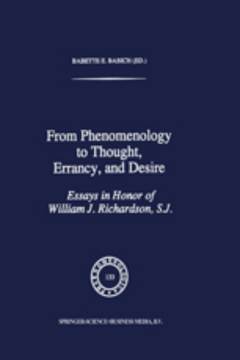Repository | Book | Chapter

(1995) From phenomenology to thought, errancy, and desire, Dordrecht, Springer.
Against the Husserlian schema of levels, Martin Heidegger's Being and Time 1 sets out to conceive understanding, feeling, and action as elements of a structural whole, and sets out to conceive this structural whole in its relationship with the environment as a world, the world. There is a diplopia in Heidegger's holistic accounts of the world. On the one hand, Being-in-the-world, where "in" has to be understood as "inhabit," signified that indwelling is an encompassing of the whole world. In Being and Time this dwelling is characterized as care, and is effected in using and manipulating implements in the practicable field. The world is the distribution, the layout as such, teleological finality, order, ordinance, cosmos. It is the system or network of instrumental connections. The practicable field, a layout of relays, is later characterized as openness. This openness is suspended in the abysses of nothingness, death. In this account, our existence figures as ecstasis, projection, freedom. Yet the things, which open the paths and highways of the world, are also described as rafts and refuges which we originally cling to in fleeing the uncanny sense of nothingness that the sense of openness opens upon.
Publication details
DOI: 10.1007/978-94-017-1624-6_37
Full citation:
Lingis, A. (1995)., The world as a whole, in B. Babich (ed.), From phenomenology to thought, errancy, and desire, Dordrecht, Springer, pp. 601-615.
This document is unfortunately not available for download at the moment.



